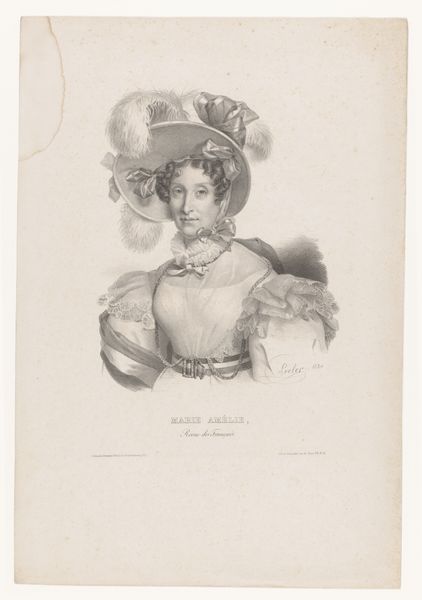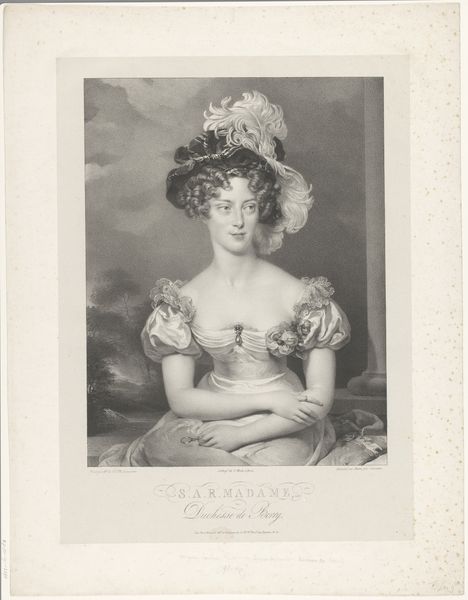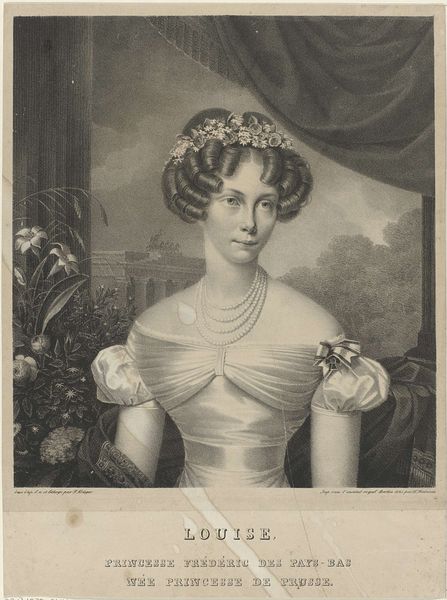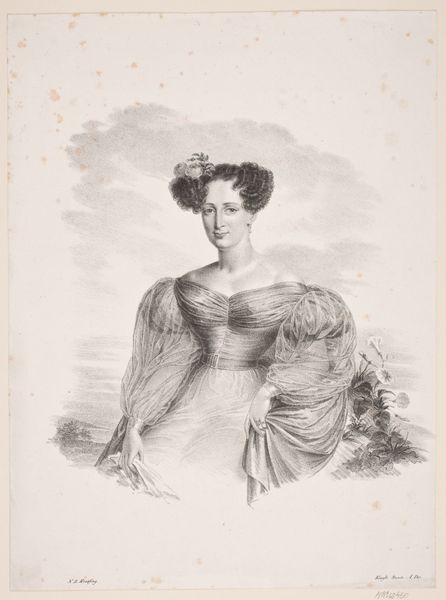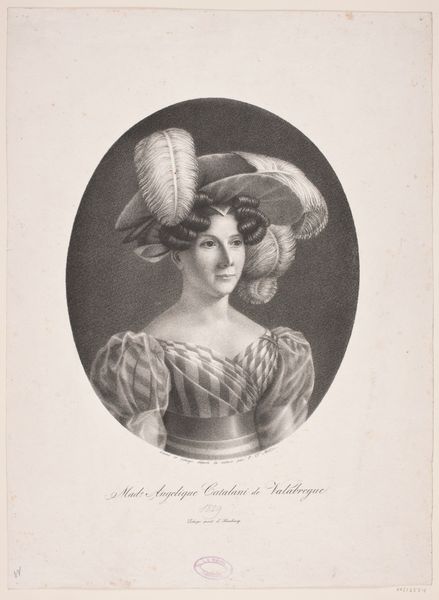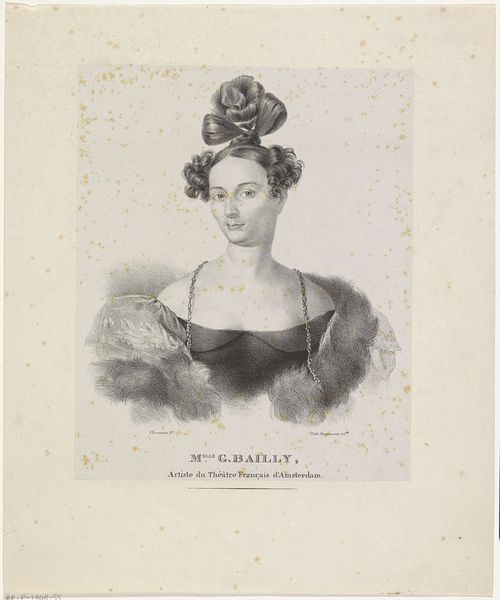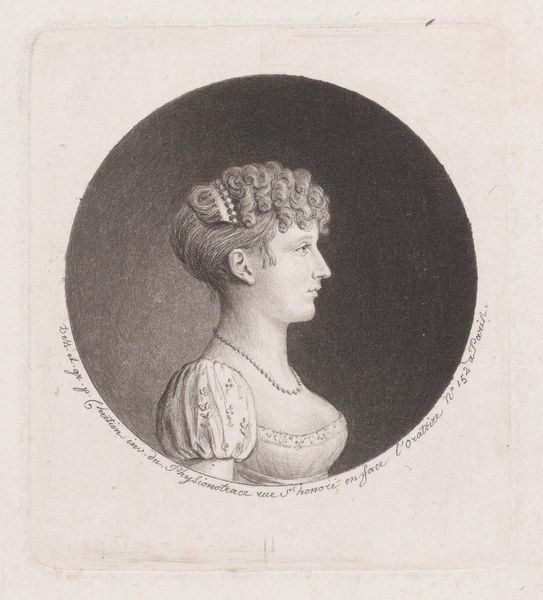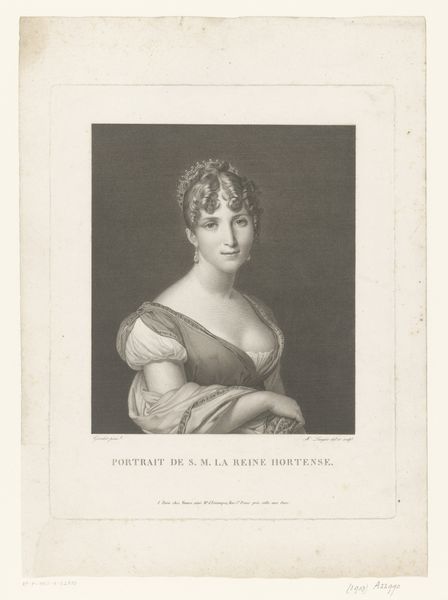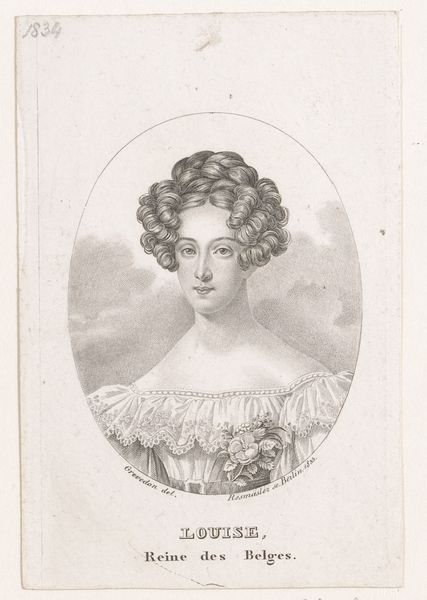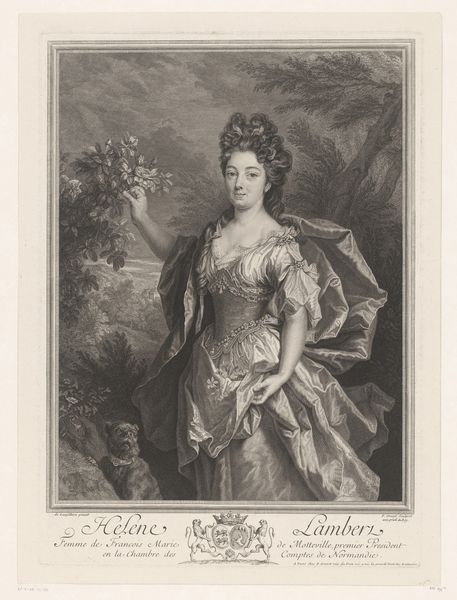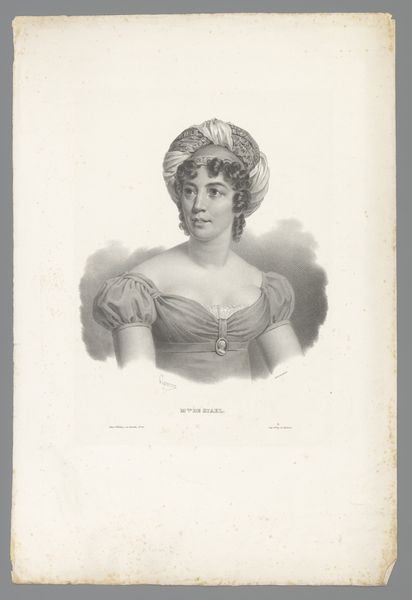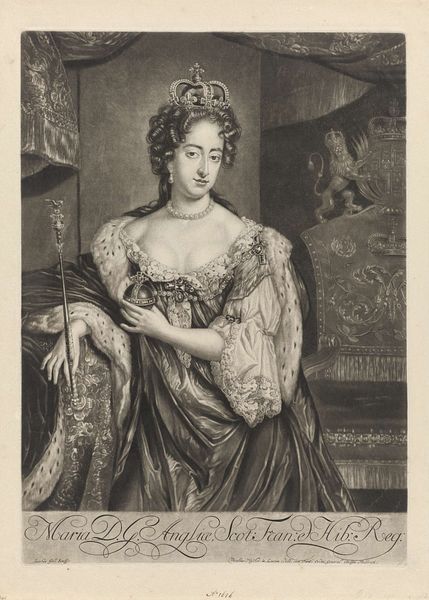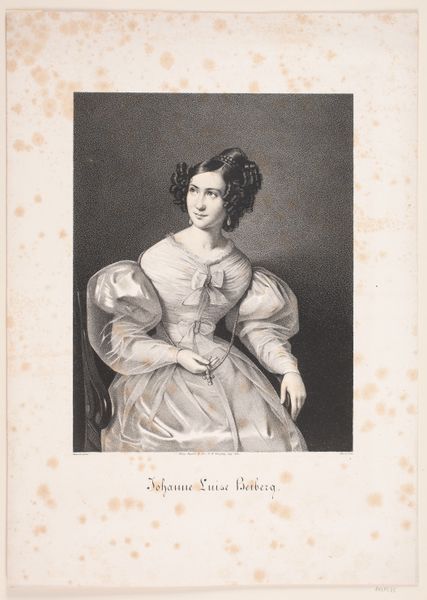
print, engraving
#
portrait
#
neoclacissism
# print
#
history-painting
#
engraving
#
realism
Dimensions: height 447 mm, width 334 mm
Copyright: Rijks Museum: Open Domain
This print of Anna Paulowna Romanowa was made using a technique called ‘lithography’, which allows for the relatively quick production of images. The process involves drawing an image with a grease-based crayon on a flat slab of limestone, which is then treated with chemicals so that only the drawn areas attract ink. From there, multiple prints can be pulled efficiently. Look closely, and you can see the subtle texture created by the crayon on stone. The lithographic process democratized image-making to some extent, making portraits like this one more widely available, but of course, this image remains an object of privilege. The pearls, the dress, the elaborate hairstyle—all speak to Anna Paulowna’s elevated social position, and the labor required to maintain it. Considering this print through the lens of material and making allows us to look beyond the subject matter and understand the economic and social context in which it was produced and consumed, challenging traditional notions of fine art.
Comments
No comments
Be the first to comment and join the conversation on the ultimate creative platform.
